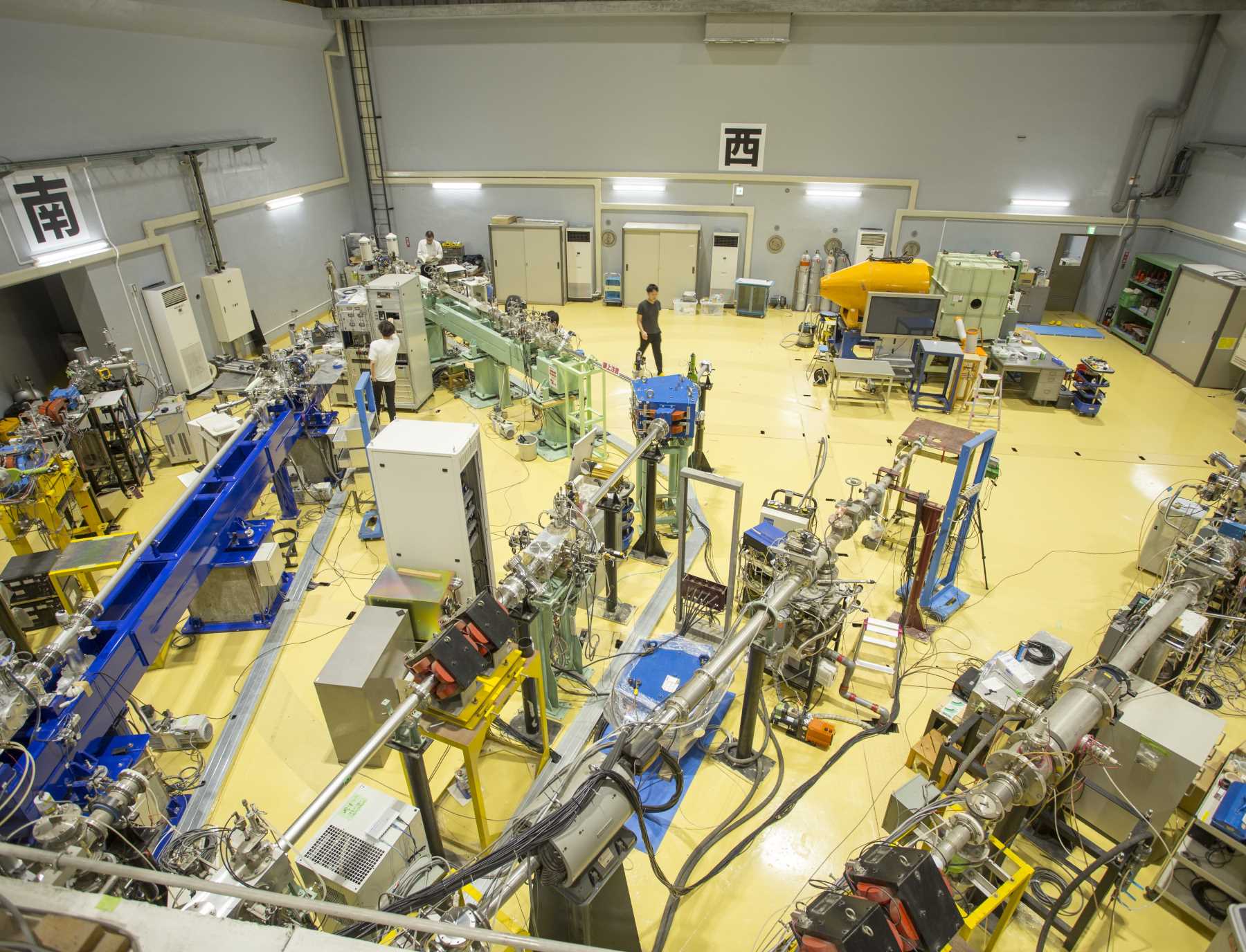We developed two microbeam lines, MB-I and MB-II, which both have quadrupole lenses and slits on heavy, rigid, anti-vibration tables. The MB-I beam diameter of 400 nm was achieved by reducing the parasitic magnetic field. MB-II is a simpler version of MB-I; both beamlines have various applications, and both are controlled by LabVIEW-based software and a programable logic controller (PLC). The beam scanners are downstream of the quadrupole lenses and controlled by a CompactRIO system. An automatic beam-focusing and focal guidance system reduces the time required for experimental configuration; this system is in routine use by researchers at Tohoku University. Microbeam experiments can easily be performed using this system. To further expand the applications, we developed MB-II-AQUA, which is based on MB-II but has advanced modularization and packaging. MB-II-AQUA is commercially available and retains the performance of MB-II, but is easier to use. A control system for the quadrupole lens and slit has been installed at the Takasaki Advanced Radiation Research Institute, which is a leading microbeam research facility in Japan.
新着情報
What's new.
イオンビーム利用・分析利用
イオンビーム分析
PIXE/RBS/ERDA/STIM/NRA/PIGE/SEM/PIXE-CT/Micron-CT
材料照射
A wonderful serenity has taken possession of my entire soul like these sweet mornings.中性子場
A wonderful serenity has taken possession of my entire soul like these sweet mornings.初めて利用される方へ
初めて当実験室を利用される方、利用を検討されている方はご一読ください。利用申込案内
施設利用を随時受け付けています。利用を検討している方は個別にお問い合わせくださいトライアル利用
特定の条件を満たす場合には無償のトライアル利用の制度があります。利用申込のページからご確認ください。詳細はこちらから
FEATUTRED ARTICLE
Salinity stress can greatly reduce seed production because plants are especially sensitive to salt during their reproductive stage. Here, we show that the sodium ion transporter AtHKT1;1 is specifically expressed around the phloem and xylem of the stamen in Arabidopsis thaliana to prevent a marked decrease in seed production caused by salt stress. The stamens of AtHKT1;1 mutant under salt stress overaccumulate Na+, limiting their elongation and resulting in male sterility. Specifically restricting AtHKT1;1 expression to the phloem leads to a 1.5-fold increase in the seed yield upon sodium ion stress. Expanding phloem expression of AtHKT1;1 throughout the entire plant is a promising strategy for increasing plant productivity under salinity stress.
A new system to precisely control the accelerating voltage of an electrostatic accelerator has been developed. With this development, the acceleration voltage stability ΔV/V in the low-frequency range was successfully controlled to 6.0 × 10−5. In this development, the cause of the voltage fluctuation of the acceleration voltage was investigated. As a result, it was found that noise components due to mechanical vibration existed. Therefore, the HVD (High-Voltage Divider) feedback method, which is less susceptible to mechanical vibration, was adopted and the effect of vibration was successfully eliminated. Furthermore, by adding a high-sensitivity CPO feedback system in place of the previously used slit feedback system, low-frequency voltage fluctuations were eliminated, and high acceleration voltage stability could be obtained even in beamlines without a slit system.
BLOGポスト
最近の出来事、新しい技術開発、ニッチな内容を不定期にお届けします
